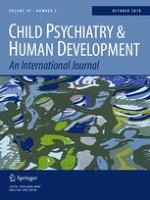20-03-2018 | Original Article
The Effect of Neurocognitive Function on Math Computation in Pediatric ADHD: Moderating Influences of Anxious Perfectionism and Gender
Gepubliceerd in: Child Psychiatry & Human Development | Uitgave 5/2018
Log in om toegang te krijgenAbstract
Predictors of math achievement in attention-deficit/hyperactivity disorder (ADHD) are not well-known. To address this gap in the literature, we examined individual differences in neurocognitive functioning domains on math computation in a cross-sectional sample of youth with ADHD. Gender and anxiety symptoms were explored as potential moderators. The sample consisted of 281 youth (aged 8–15 years) diagnosed with ADHD. Neurocognitive tasks assessed auditory-verbal working memory, visuospatial working memory, and processing speed. Auditory-verbal working memory speed significantly predicted math computation. A three-way interaction revealed that at low levels of anxious perfectionism, slower processing speed predicted poorer math computation for boys compared to girls. These findings indicate the uniquely predictive values of auditory-verbal working memory and processing speed on math computation, and their differential moderation. These findings provide preliminary support that gender and anxious perfectionism may influence the relationship between neurocognitive functioning and academic achievement.
